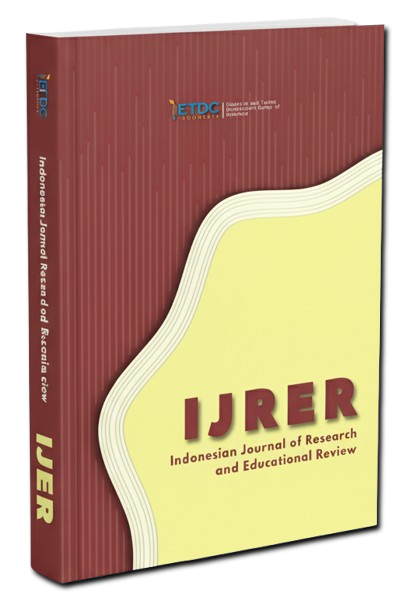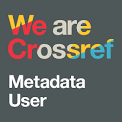Pre-Service Teachers with Courses in Problem-Based Learning in Mathematics
DOI:
https://doi.org/10.51574/ijrer.v2i2.588Keywords:
Learning, Mathematics, Problem-based learning, Pre-service Teachers, Statistical MaterialAbstract
Study This aim is to determine the effectiveness of the application of the problem-based learning model in learning statistical material for lower-level students. This research was conducted at the As'adiyah Sengkang Islamic Institute. Data collection techniques used are test results studies, sheets of observation activity, and questionnaire responses by students. The results show that: (1) the average score of the results study statistics student before the problem-based learning model is applied is 25.41 and is in the very low category with a standard deviation of 9,688. From the results obtained, 37 students, or 100%, did not reach completeness. Meanwhile, the average score of the results of the study statistics for students after the PBL model is applied is 8.3, with a standard deviation of 9,036. From the results obtained, 35 students, or 9.60%, reached completeness as individuals, and 2 students, or 5.40%, did not reach completeness as individuals. (2) Activity students are in the category of good. (3) Questionnaire responses from students show that responses are positive. (4) Average implementation of learning in the PBL model, which is 3.73, and this means we are in the category accomplished with ok. Based on the results of the study, it can be concluded that the application of the problem-based learning model is effective in teaching statistics to students at the Sengkang As'adiyah Institute of Islamic Religion.
References
Anazifa, R. D., & Djukri, D. (2017). Project-based learning and problem-based learning: Are they effective to improve student’s thinking skills?. Jurnal Pendidikan IPA Indonesia, 6(2), 346-355. https://doi.org/10.15294/jpii.v6i2.11100
Bosica, J., Pyper, J. S., & MacGregor, S. (2021). Incorporating problem-based learning in a secondary school mathematics preservice teacher education course. Teaching and Teacher Education, 102, 103335. https://doi.org/10.1016/j.tate.2021.103335
Bromage, A., Pierce, S., Reader, T., & Compton, L. (2022). Teaching statistics to non-specialists: challenges and strategies for success. Journal of Further and Higher Education, 46(1), 46-61. https://doi.org/10.1080/0309877X.2021.1879744
Franke, M. L., Kazemi, E., & Battey, D. (2007). Mathematics teaching and classroom practice. Second handbook of research on mathematics teaching and learning, 1(1), 225-256.
Gersten, R., Fuchs, L. S., Compton, D., Coyne, M., Greenwood, C., & Innocenti, M. S. (2005). Quality indicators for group experimental and quasi-experimental research in special education. Exceptional children, 71(2), 149-164.
Hoffmann, A., & Even, R. (2023). What do mathematicians wish to teach teachers about the discipline of mathematics?. Journal of Mathematics Teacher Education, 1-19. https://doi.org/10.1007/s10857-023-09577-4
Louie, N. L. (2017). The culture of exclusion in mathematics education and its persistence in equity-oriented teaching. Journal for Research in Mathematics Education, 48(5), 488-519. https://doi.org/10.5951/jresematheduc.48.5.0488
Muzaini, M., Hasbi, M., Ernawati, E., & Kristiawati, K. (2022). The Empowerment of Problem-Based Learning Models to Improve Students’ Quantitative Reasoning. Formatif: Jurnal Ilmiah Pendidikan MIPA, 12(1). http://dx.doi.org/10.30998/formatif.v12i1.8502
Naimnule, M., Kartono, K., & Asikin, M. (2020). Mathematics problem solving ability in terms of adversity quotient in problem based learning model with peer feedback. Unnes Journal of Mathematics Education Research, 9(2), 222-228. https://journal.unnes.ac.id/sju/index.php/ujmer/article/view/33859
Ng, O. L., Ting, F., Lam, W. H., & Liu, M. (2020). Active learning in undergraduate mathematics tutorials via cooperative problem-based learning and peer assessment with interactive online whiteboards. The Asia-Pacific Education Researcher, 29, 285-294. https://doi.org/10.1007/s40299-019-00481-1
Ramadhani, R., Bina, N. S., Sihotang, S. F., Narpila, S. D., & Mazaly, M. R. (2020). Students’ critical mathematical thinking abilities through flip-problem based learning model based on LMS-google classroom. In Journal of Physics: Conference Series (Vol. 1657, No. 1, p. 012025). IOP Publishing. https://doi.org/10.1088/1742-6596/1657/1/012025
Ross, S. M., & Morrison, G. R. (2013). Experimental research methods. In Handbook of research on educational communications and technology (pp. 1007-1029). Routledge.
Suparman, D. J., & Tamur, M. (2021). Problem-based learning for mathematical critical thinking skills: A meta-analysis. Journal of Hunan University Natural Sciences, 48(2). http://www.jonuns.com/index.php/journal/article/view/521/518
Downloads
Published
How to Cite
Issue
Section
License
Copyright (c) 2023 ETDC: Indonesian Journal of Research and Educational Review

This work is licensed under a Creative Commons Attribution-ShareAlike 4.0 International License.














1.png)













